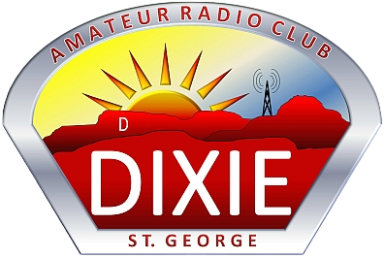Resources - Repeaters
Club Linked Repeaters
The Dixie Amateur Radio Club has a linked repeater system. Here are the new frequencies that you can use. These are open repeaters available to any Amateur to use:
- 145.490 MHz Utah Hill (covering most areas of the southern county, northern Clark County, NV)
- 146.640 MHz Webb Hill (coverage of metropolitan St. George, Washington)
- 145.450 MHz Toquerville (coverage of northern Washington County, Hurricane/LaVerkin - eastern Washington County areas)
Remember, the frequency that you should have your transceiver's receiver set on is the frequency shown above. You should have the transmit offset set to minus (-) 600kHz and each of these repeaters require a 100hz CTCSS tone to access them.
All you need to do is key up on one of the 2 meter DARC repeaters, count to two to get time for the links to all come up, identify yourself.
The DARC repeaters are:
- 145.490, minus 600khz transmit offset, with 100.0Hz CTCSS tone,
- 145.450, minus 600khz transmit offset, with 100.0Hz CTCSS tone, and
- 146.640, minus 600khz transmit offset, with 100.0Hz CTCSS tone.
The 145.49 is a high elevation mountaintop repeater with good general wide-area coverage. The 145.45 is a medium level machine that works best in the Hurricane area. Up to the Zion park entrance works on a mix of 145.49 and 145.45 with .45 being the best overall. The 146.64 is a low level machine for St. George and Washington area coverage. All three of these repeaters are normally linked.
Presentation on Club Linked Repeater System
Intermountain Intertie
The Intermountain Intertie is a system of linked repeaters managed by the Utah VHF Society. The repeaters can be used by anyone, but it is encouraged that you join them so they have the funds to manage and maintain the repeaters. The web site has a list of repeaters that are managed by the Utah VHF Society, and a list of all the repeaters in Utah. The Utah VHF Society has a repeater on Utah Hill in St George - output frequency is 146.820, input frequency is 146.220, subtone 100 Hz.
The Utah VHF Society web site:
